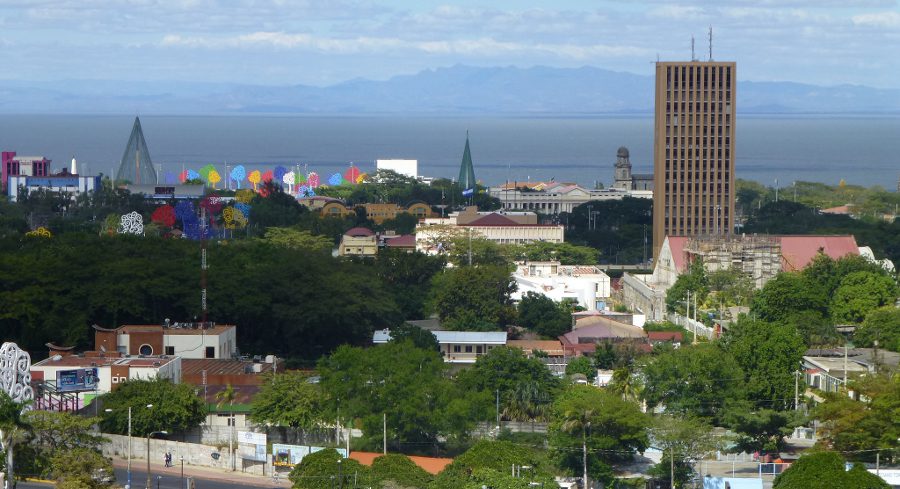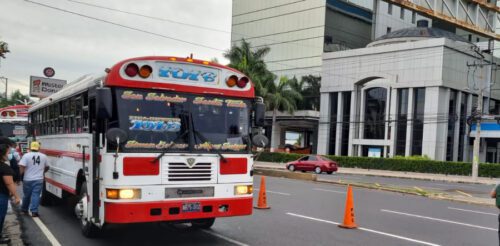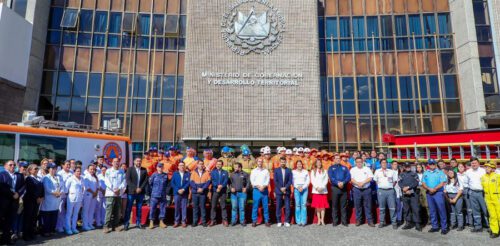Despite having retired more than a decade ago, at 71 years old, Agustín had to go back to work to survive. “I have had this job, in a factory in New York, since recently,” he says while getting ready to cover a seven-hour night shift. The job is packaging cookies.
Agustín reached the United States in 2023. Without a pension, despite being over 60 years of age, which entitled him to a pension by law in Nicaragua, his birth country. In 2018, already 66, he had to fight for his pension rights alongside hundreds of others who protested against government measures that strongly affected pensioners.
The situation worsened so much that it triggered the most serious social and political crisis in Nicaragua’s recent history.
Agustín confronted the regime’s repression. And, with thousands of protestors, won the battle against the measures proposed by the Sandinista government. However, he was jailed and expelled from his own country by the regime of Nicaraguan President Daniel Ortega.
Like several others interviewed for this piece, he asked that his identity be protected because the government of his country persecutes those who criticize it.
Everything began on April 16, 2018, when the Nicaraguan Institute of Social Security (INSS), the entity in charge of pensions and retirement contributions, approved a reform of the Social Security Law that was published two days later in the Official Gazette.
Among the measures was the intention to reduce pensions by five percent and change the formula used to calculate new pensions. These actions triggered large protests in the cities of Managua and Leon.
Subsequently, they spread throughout the country. The state’s repressive response left around 355 dead, according to the Interamerican Commission for Human Rights (IAHR).
The Sandinista regime cared little about the advanced age of many protestors when it came to imprisoning them, leading to dozens of them arriving at Nicaraguan prisons as political prisoners.

The protests broke out following reforms to Social Security in 2018, and in the City of León, Nicaragua, supporters of the ruling party attacked older adults who demonstrated. Photo: Primer Orden, used with permission.
Because of the protests, the regime withdrew and repealed the 2018 reform. However, in January 2019, after the regime had managed to repress the protests and intensify the repression, it introduced with urgency a new combination of social security reforms that meant a greater burden on private companies and the formal working class.
In the case of pensioners, a series of additional measures are applied that were, to some extent, not part of the previous reform proposal. Due to this, people who retire after 2019 receive less than 30 percent of what those who retired the year before receive.
SEE ALSO: Living in El Salvador: Top Reasons for Moving to El Salvador
Reduction in benefits
After fighting for better conditions in 2018, “care for retirees has reduced even more,” complains Ángela. Five years after the social explosion, she considers her situation even worse than before since she cannot work and her pension is not enough to cover her living expenses. The conflict around pensions has triggered a political and social crisis in Nicaragua.
The regime also ordered the closure of millions of civil society organizations. Without quality medical care, the situation for older adults is deteriorating greatly, explains Leonel Argüello, a doctor who specializes in epidemiology and works for the Nicaraguan Ministry of Health. For him, “quality medical care is not only a matter of respect for the population but also a requirement from the perspective of human rights, as well as a responsibility of the state.”
Since 2019, the 119,276 older adults who receive a full pension from the INSS have seen other significant and gradual reductions in benefits, such as medication and readjustments in pensions and auxiliary materials like wheelchairs and canes.

Since 2018, the year the crisis erupted in Nicaragua, the delivery of prostheses, wheelchairs, canes, and hearing aids, among others, by the INSS has diminished drastically. Image: CONNECTAS. Source: INSS Statistical Yearbooks. Made with Datawrapper. Used with permission.
Those who need auxiliary materials such as prostheses, wheelchairs, crutches, canes, hearing aids, and lifelines are also in a delicate situation because the INSS has been running out of supplies since 2016. Professor Sandra is one of the more than seven thousand people who retired with a pension in the INSS in 2020 and who, due to the 2019 reform, obtained a much smaller pension. She retired in July 2022, three years after the 2019 reform, and says that her pension, despite being full, is very different from the one her father receives.

Monthly increase in pension by year. Since the eruption of the sociopolitical crisis, the adjustment of pensions has been diminishing more and more. Every year, the amount added to the pension was less. Amounts expressed in cordobas a pear. The Anuario was last published in 2021. Image: CONNECTAS. Source: INSS Statistical Yearbooks. Made with Datawrapper. Used with permission.
SEE ALSO: Exploring El Salvador Culture: Embracing Vibrant Customs and Traditions with Warm-hearted People
An even worse future
The Nicaraguan labor system has another weakness: The gap between men and women in employment levels and salaries. Until 2021 the population of older people skewed toward women (54.02 percent) over men (45.98 percent), however, the opposite is true when it comes to the quantity of pensions received. In 2021, the last year in which the INSS statistical yearbook was published, 58.58 percent of pensioners (in reduced and full pensions) were men.
Sociologist María Teresa Blandón explains that this difference represents a structural problem in the socioeconomic system of Nicaragua. According to her analysis, this “means that men have been the majority in paid work and the women in unpaid work.”
The most serious problem in the country, however, is that 67.43 percent of the elderly population does not even have a pension, according to 2021 data from the National Institute of Development Information (INIDE) and the INSS, which is the last on record. Until this year, only 32.57 percent of the population above 60 was a pensioner.

By 2024, the situation of older pensioners in Nicaragua will be worse, since they will face a drastic reduction in the annual adjustment of their pensions. Photo: Primer Orden. Used with permission.
Moreover, of the 570,864 elderly people who registered in this year, only 20.89 percent received a full pension, one that allowed access to health services and auxiliary materials such as canes, lifelines, and diapers, among others. Those on reduced pensions, who make up 35.84 percent of pensioners and 11.67 percent of the elderly population, don’t have access to these auxiliary materials nor to medical care from the INSS, and must go to the health system administered by the Ministry of Health.
Due to this complex reality, many aging adults in Nicaragua have had to leave the country, and it is likely that more will do so to protect their integrity, resume their lives, and work, despite already reaching retirement age.
“We don’t give up hope of returning to our fatherland. It’s true that they stripped us of our citizenship, but we will never stop being Nicaraguan,” Agustín confides.
SEE ALSO: El Salvador Tourism: A Journey Through Pristine Beaches, Colorful Towns, and Enchanting Parks

 Managua, Nicaragua.
Managua, Nicaragua. 
